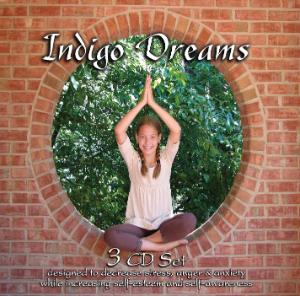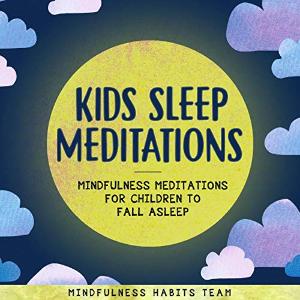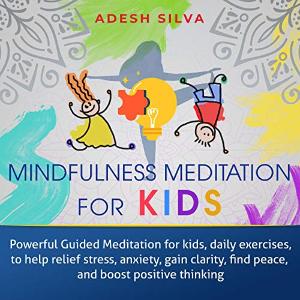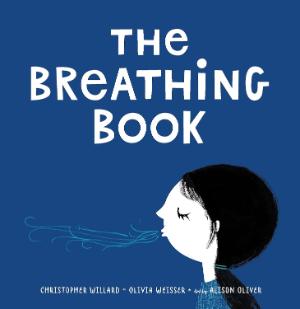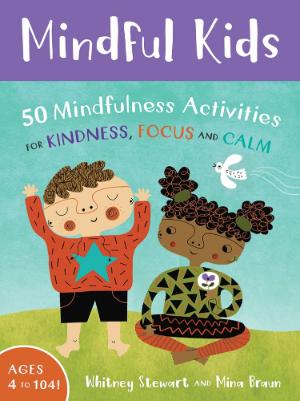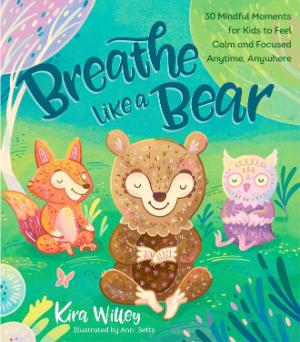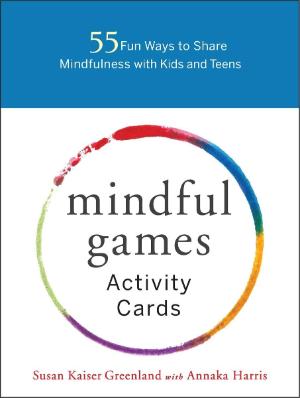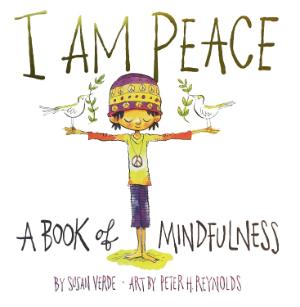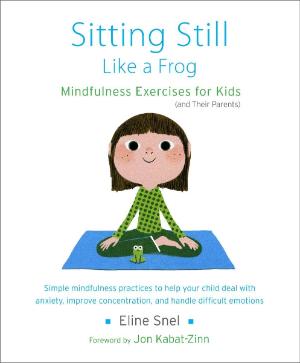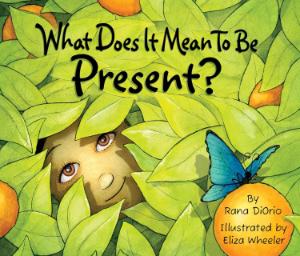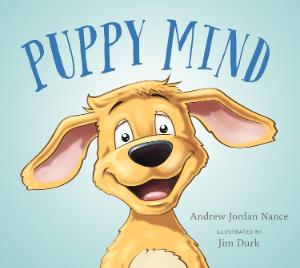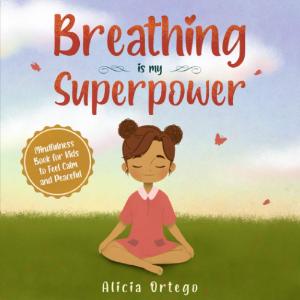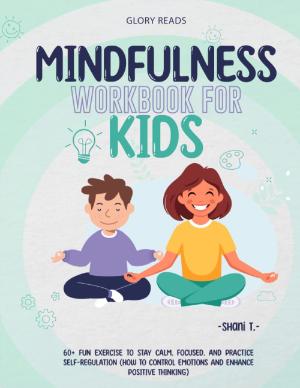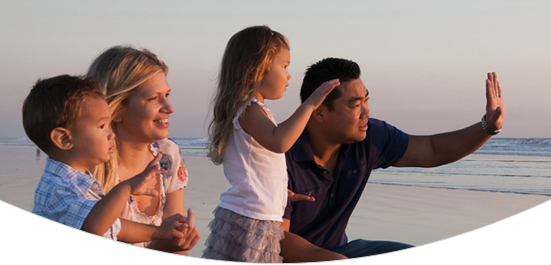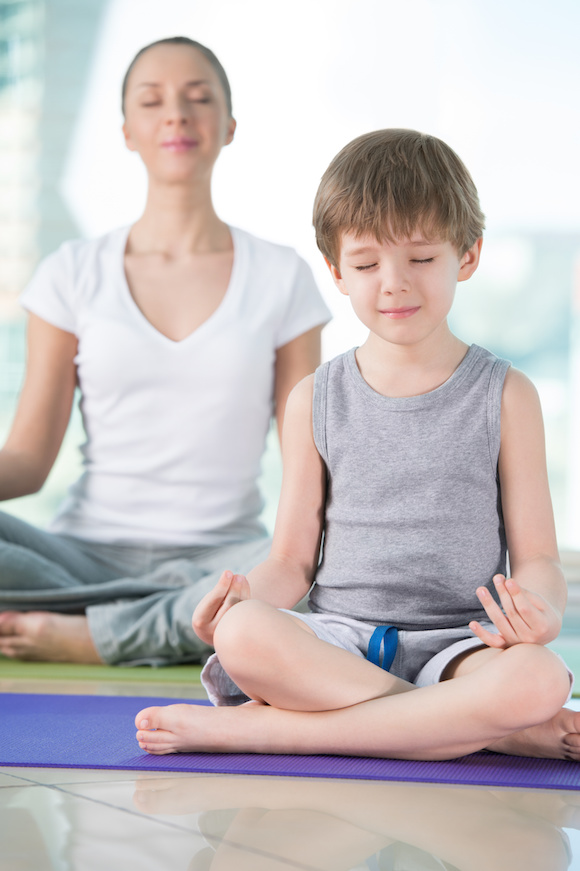
Even very young children can learn how good it feels to drop into inner calm. When I was four, my favorite game was the Still Game. I would convince one of the neighbor children to sit quietly with me, shut our eyes and remain very still. I don't think any of them found this as riveting as I did, so it never lasted long. But I always had a hard time tearing myself away from that deep stillness to reconnect with my playmates and the world. The Still Game felt to me like opening a door to sunshine and peace, and started me on a life path of mindfulness practices.
Children like to move, so they usually don't sit still for long. But all children instinctively connect to presence. I think for children to enjoy meditation, it needs to be something we model, build into the schedule regularly, do only for short periods, and begin in a way that is enticing for the child, such as with guided meditation.
Happily, you don't need to bribe your child to sit still. There are wonderful guided meditations available now to introduce children of all ages to meditation and mindfulness, and they're interesting enough to hold kids' attention. Resources to get you started are listed at the end of this article.
And there are now some terrific books for children (one by Thich Nhat Hanh) to introduce the idea of mindfulness, some of which I've linked to below.
And of course, in addition to there being many ways to Meditate, there are many Mindfulness practices, from learning to notice your body in space, to learning to calm yourself, to learning to be more present. These techniques are often fun for children to learn when they're calm, and if they become a regular part of your family life, your child may even remember to use them when they're angry.
The challenge in getting children to use these strategies for self-regulation is that when a human is angry, suggesting they calm down is like throwing gasoline on a fire. (Do you recall the last time you were really outraged about something that mattered to you? What if your partner or friend, instead of listening to you, had suggested that you take a few deep breaths to calm down?)
So, if you approach mindfulness practices with the attitude that you're "fixing" your child's inappropriate tendency to get emotional, your child will naturally resist.
If, instead, you make a family project out of what you might call "learning to be aware of our emotions so we can communicate in a kind way and choose our actions," your child will probably be open to the idea. If you play mindfulness games with your child, and talk about how much you're enjoying them and what you're earning, your child will also enjoy them and learn.
If you model using mindfulness techniques when you're upset, your child will come to think of it as a normal, helpful strategy when facing challenging emotions. So be explicit:
- "I'm feeling upset so I'm going to take some slow deep breaths to help me calm down. 1....2....3...."
- "I feel a little worried about this. Everyone gets worried sometimes. I can help myself feel more confident by reassuring myself that it's not an emergency. I can handle this."
Then, when your child is upset, you can ask yourself if they want to use your tools:
- "I see you're feeling upset right now. Do you want to breathe with me?"
- "It's normal to feel worried sometimes. Is there something you could tell yourself that would be reassuring?"
Just be prepared to listen to your child's upset before you ask them to calm down.
And if you take the time to enjoy a guided meditation with your child every day, you'll both enjoy it, and before you know it, your child will be asking to play the Still Game!
Guided Meditations for Children
The website MINDFULNESS FOR CHILDREN has lovely guided meditations you can download at no charge.
Here's an article from the New York Times describing some easy meditation/relaxation exercises you can try with your child.
Live and Dare has some great meditations you can do with kids.
Meditation Apps for Kids
Sesame Street has a free App for Kids: Breathe, Think and Do.
MOSHI has meditations, soothing stories and more for kids and has rave reviews about how much it helps children relax and fall asleep. Costs $10/month, but you can try it free for a week.
Guided audios for download:
Books and Game Cards to introduce children to the idea of meditation and mindfulness:
Interested in the Research on Kids and Meditation?
There's more every day! Here are some studies to get you started.
- Baijal, S., Jha, A. P., Kiyonaga, A., Singh, R., & Srinivasan, N. (2011). The influence of concentrative meditation training on the development of attention networks during early adolescence. Frontiers in Psychology, 2, 1-9.
- Barnes, V. A., Davis, H. C., Murzynowski, J. B., & Treiber, F. A. (2004). Impact of meditation on resting and ambulatory blood pressure and heart rate in youth. Psychosomatic Medicine, 66(6), 909-914.
- Crescentini, C., Capuso, V., Furlan, S., Fabbro, F. (2016) . Mindfulness-Oriented Meditation for Primary School Children: Effects on Attention and Psychological Well-Being. Frontiers in Psychology, V. 7 Article 805.
- Liehr, P., & Diaz, N. (2010). A Pilot Study Examining the Effect of Mindfulness on Depression and Anxiety for Minority Children. Archives of Psychiatric Nursing, 24(1), 69–71.
- Mendelson, T., Greenberg, M. T., Dariotis, J. K., Gould, L. F., Rhoades, B. L., & Leaf, P. J. (2010). Feasibility and preliminary outcomes of a school-based mindfulness intervention for urban youth. Journal of Abnormal Child Psychology, 38(7), 985–994.
- Metz, S. M., Frank, J. L., Reibel, D., Cantrell, T., Sanders, R., & Broderick, P. C. (2013). The effectiveness of the learning to BREATHE program on adolescent emotion regulation. Research in Human Development, 10(3), 252–272.
- Napoli, M., Krech, P. R., & Holley, L. C. (2005). Mindfulness Training for Elementary School Students. Journal of Applied School Psychology, 21(1), 99–125.
- Raes, F., Griffith, J. W., Van der Gucht, K., & Williams, J. M. G. (2014). School-based prevention and reduction of depression in adolescents: A cluster-randomized controlled trial of a mindfulness group program. Mindfulness, 5(5), 477–486.
- Schonert-Reichl, K. A., Oberle, E., Lawlor, M. S., Abbott, D., Thomson, K., Oberlander, T. F., & Diamond, A. (2015). Enhancing cognitive and social–emotional development through a simple-to-administer mindfulness-based school program for elementary school children: A randomized controlled trial. Developmental Psychology, 51(1), 52-66.
- Semple, R. J., Lee, J., Rosa, D., & Miller, L. F. (2010). A randomized trial of mindfulness-based cognitive therapy for children: promoting mindful attention to enhance social-emotional resiliency in children. Journal of Child and Family Studies, 19(2), 218–229
- Sibinga, E. M. S., Webb, L., Ghazarian, S. R., & Ellen, J. M. (2016). School-Based Mindfulness Instruction: An RCT. Pediatrics, 137(1), 1-8.
- Zenner, C., Herrnleben-Kurz, S., & Walach, H. (2014). Mindfulness-based interventions in schools—a systematic review and meta-analysis. Frontiers in Psychology, 5.


